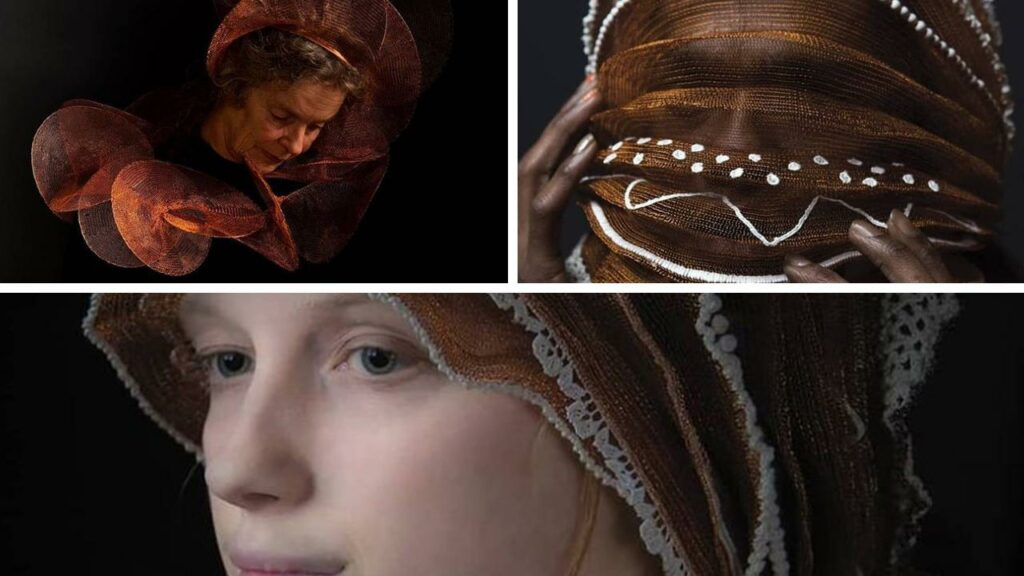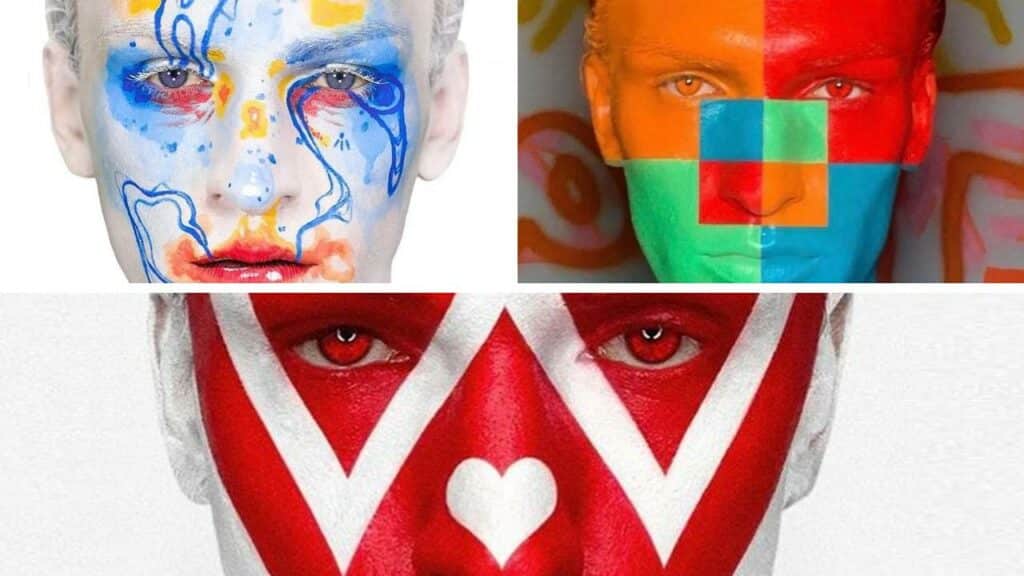The boundaries between painting, sculpture, craft and performance disappeared long ago, but in “Fashion for Bank Robbers” the different artistic expressions are brought together under a very corporeal common denominator: they are wearable. From makeup and hair sculpting to costume design, from traditional craft techniques like knitting or lace to the “state of the arts” 3D pen drawing, from the curiously sinister to the simply beautiful, these artistic objects are in many cases portrayed by renowned photographers. Many of the photographs are works of art in their own right, but the human body is the artworks’ essential support, and some of the most celebrated models that wear these face and body coverings are Grace Jones, Björk, and Tilda Swinton. Also suitable for the shy.
Karin Marseille: applying the natural growth principle. Maths, technology, and art
Using scientific and craft techniques in copper thread knitting, Karin Marseille builds seemingly simple yet intricate sculptures that resonate the fundament of natural growth. For her, the process is just as important as the result. And like the process, the result is a symbiosis between the human and the artistic, something that transcends geographical and cultural differences.


Nature’s endless growing movement develops in mathematical circles, and so do these three-dimensional wearable artworks. In her necklaces, veils and arm pieces, Karin Marseille obtains a delicate, organic look with a resilient build that seems to set aside the notion of an accessory, almost to function as a spontaneous extension of the human body.
The masks of Carina Shoshtari, the awarded jeweler who is guilty of Fashion for Bank Robbers
Based in Munich, a jeweler and a goldsmith by formation, Carina Shoshtari started collecting the images of body covering art that compose “Fashion for bank robbers” in 2020. Following her fellow artists featured in the page, Carina is currently extending her work to masks and headpieces, in a long-distance collaboration with Ryan Burke, a makeup artist and photographer based in New York.


Carina Shoshtari sees herself as a hunter-gatherer. Her art is made from materials she finds around her and recycles, allowing them to revive and continue a story of their own. The masks and headpieces she produces are drawn with a 3D pen, and somehow take us to a dreamlike, underwater world with their coral colours and shapes.
Shapeshifting: female and and nature power. Brazilian artist Melissa Meier’s sculptures
The wearable art featured in these pictures belongs to a collection inspired by the myths of natural spirits. Native-American skin-walkers’ ritual of wearing animal skins in order to metamorphose into them were the starting point of this creation that blends the natural, the mythological and the political fields. The name of the series is “Skins”.


Melissa Meier strives to empower women through an imagery of warrior heroines living in perfect harmony with nature. The pieces, which also intend to challenge the limits of future fashion, are dynamic assemblages of natural elements. In this case, moss, but the collection includes materials such as eggshells, feathers, sponges, all consciously collected without causing harm to nature.
Laurel Charleston, celebrating visibility of makeup as fine art
The art of Laurel Charleston is all about presence. It aims to show the beauty of makeup and transgender. Laurel wants to get rid of the idea of makeup as something that is disguised as “beautiful skin”, something that only exists to beautify that which she sees merely as a wasted possibility: skin is nothing more than a blank canvas.


Laurel Charleston’s artwork is vivid, colorful, and self-assertive. Van Gogh, Monet, and Picasso are some of the painters whose works she recreates, thus realizing the human embodiment of classical painting. Laurel wants to challenge the status quo in institutional arts and society. Artistic expression is self-expression. Makeup is a means of artistic expression. Like identity, makeup is to be seen.
